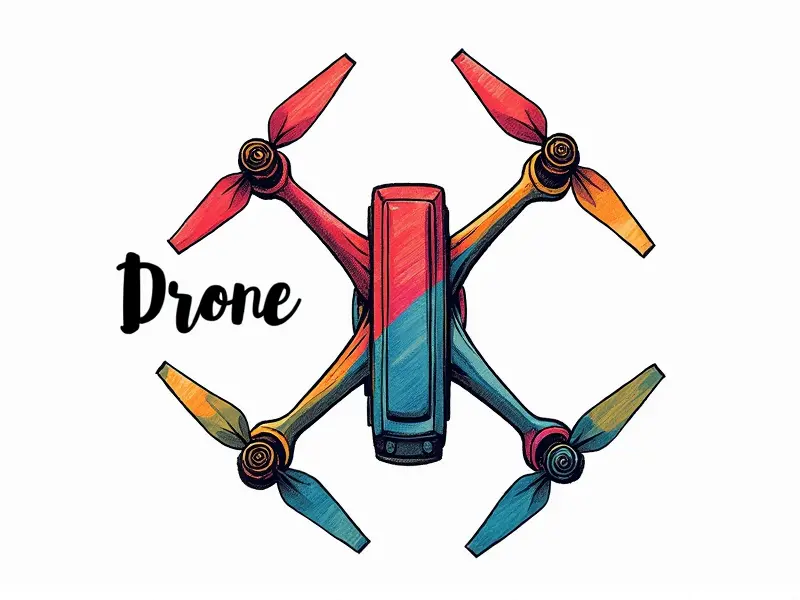FPV camera resolution?

Best FPV Camera Resolution for Crystal Clear Views
When it comes to First Person View (FPV) drone racing, the quality of your camera's resolution can make or break your experience. A high-resolution FPV camera ensures that you have crystal clear views during flight, allowing you to navigate through tight spaces and avoid obstacles with ease.
Optimal Resolution for FPV Racing Drones
The optimal resolution for FPV racing drones is a balance between clarity and latency. While higher resolutions offer better image quality, they can also introduce lag due to increased processing requirements. For most FPV racers, a resolution of 720p at 60 frames per second (fps) strikes the perfect balance.
Maximize Your FPV Experience with Resolution
To maximize your FPV experience, it's crucial to choose a camera that offers both high resolution and low latency. A good rule of thumb is to aim for at least 720p resolution, which provides sufficient detail while maintaining smooth video transmission.
How Resolution Affects FPV Video Quality
The resolution of your FPV camera directly impacts the quality of the video feed you receive during flight. Higher resolutions provide more detailed images with better color accuracy and contrast. However, it's important to note that higher resolutions also require faster data transmission rates, which can affect latency.
Top FPV Camera Resolutions for Beginners
For beginners in the world of FPV drone racing, a resolution of 720p is often recommended as it offers an excellent balance between quality and performance. This resolution allows you to get used to flying without being overwhelmed by technical details.
Finding the Right Resolution for FPV
Choosing the right resolution for your FPV camera involves considering several factors, including your drone's processing capabilities, latency requirements, and personal preferences. It's important to test different resolutions to find what works best for you.
Factors to Consider When Choosing Resolution
- Drones Processing Power: Ensure that your drone can handle the resolution without lagging.
- Latency Requirements: Lower latency is crucial for fast-paced racing, so choose a resolution that minimizes delay.
- Battery Life: Higher resolutions may drain battery faster due to increased processing demands.
The Impact of Resolution on FPV Performance
The impact of resolution on FPV performance is significant. While higher resolutions offer better image quality, they can also introduce lag and increase power consumption. Therefore, it's essential to find the right balance that suits your specific needs.
Resolution vs. Latency Trade-off
- Higher Resolution: Better visual clarity but potential for increased latency.
- Lower Resolution: Faster transmission rates and reduced lag, ideal for fast-paced racing.
Why Higher Resolution Isn't Always Better in FPV
While higher resolution cameras provide better image quality, they are not always the best choice for FPV. Increased resolution can lead to higher latency, which is detrimental to performance in fast-moving environments like drone racing.
Latency and Its Impact on Performance
- Increased Latency: Higher resolutions often result in longer transmission times, affecting reaction speed.
- Battery Drain: More processing power required for higher resolution can shorten flight time.
Understanding the Impact of FPV Cam Res
Understanding how camera resolution impacts your FPV experience is crucial. It affects not only image quality but also factors such as latency, battery life, and overall performance. By choosing the right resolution, you can enhance your flying enjoyment while maintaining optimal drone efficiency.
Key Considerations for Resolution Impact
- Image Clarity: Higher resolutions offer sharper images with more detail.
- Data Transmission: Lower resolutions transmit data faster, reducing lag.
- Battery Efficiency: Balancing resolution and power consumption is key to longer flight times.
Choosing the Right Resolution for Your FPV Drone
Selecting the right resolution for your FPV drone involves careful consideration of various factors. Start by assessing your drone's capabilities, then choose a resolution that provides clear visuals without compromising performance.
Steps to Choose the Ideal Resolution
- Evaluate Drone Capabilities: Check processing power and transmission rates.
- Determine Latency Tolerance: Decide how much lag you can tolerate for optimal performance.
- Battery Life Considerations: Ensure the resolution does not excessively drain your battery.
What's the Ideal Resolution for FPV Racing Cameras?
The ideal resolution for FPV racing cameras is typically 720p at 60 fps. This provides a good balance between image quality and performance, ensuring clear visuals without introducing significant lag or power consumption issues.
Benefits of 720p Resolution
- Clear Images: Offers sufficient detail for racing while maintaining smooth video transmission.
- Favorable Latency: Minimizes delay, allowing quick reactions during races.
- Battery Efficiency: Balances power consumption without excessive drain.
Conclusion
In conclusion, choosing the right resolution for your FPV camera is crucial to achieving optimal performance and enjoyment. While higher resolutions offer better image quality, they may introduce latency issues that can hinder your flying experience. For most FPV racers, a balanced approach with 720p at 60 fps strikes the perfect balance between clarity and performance.

